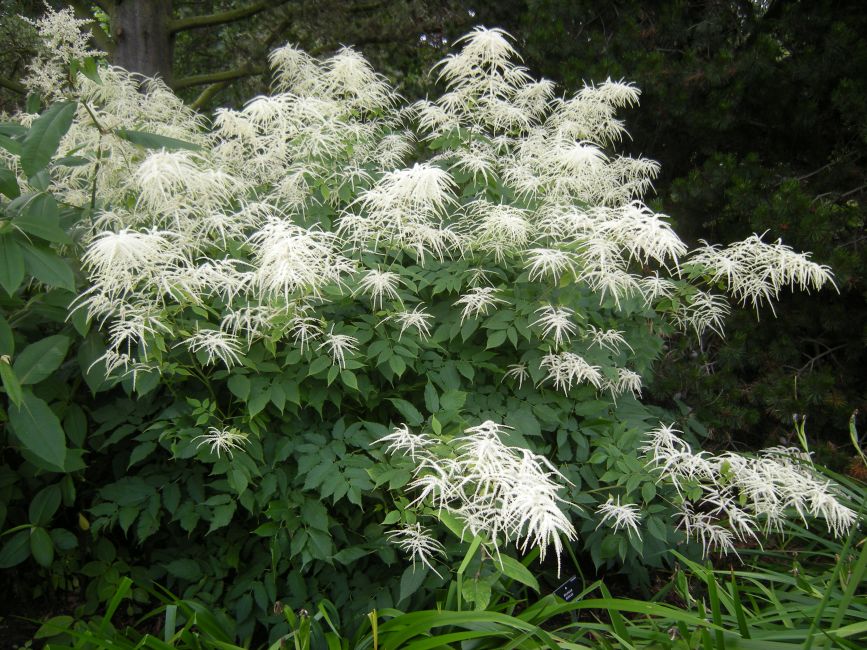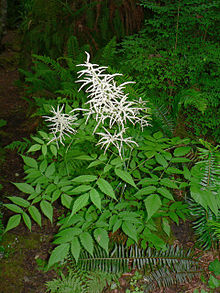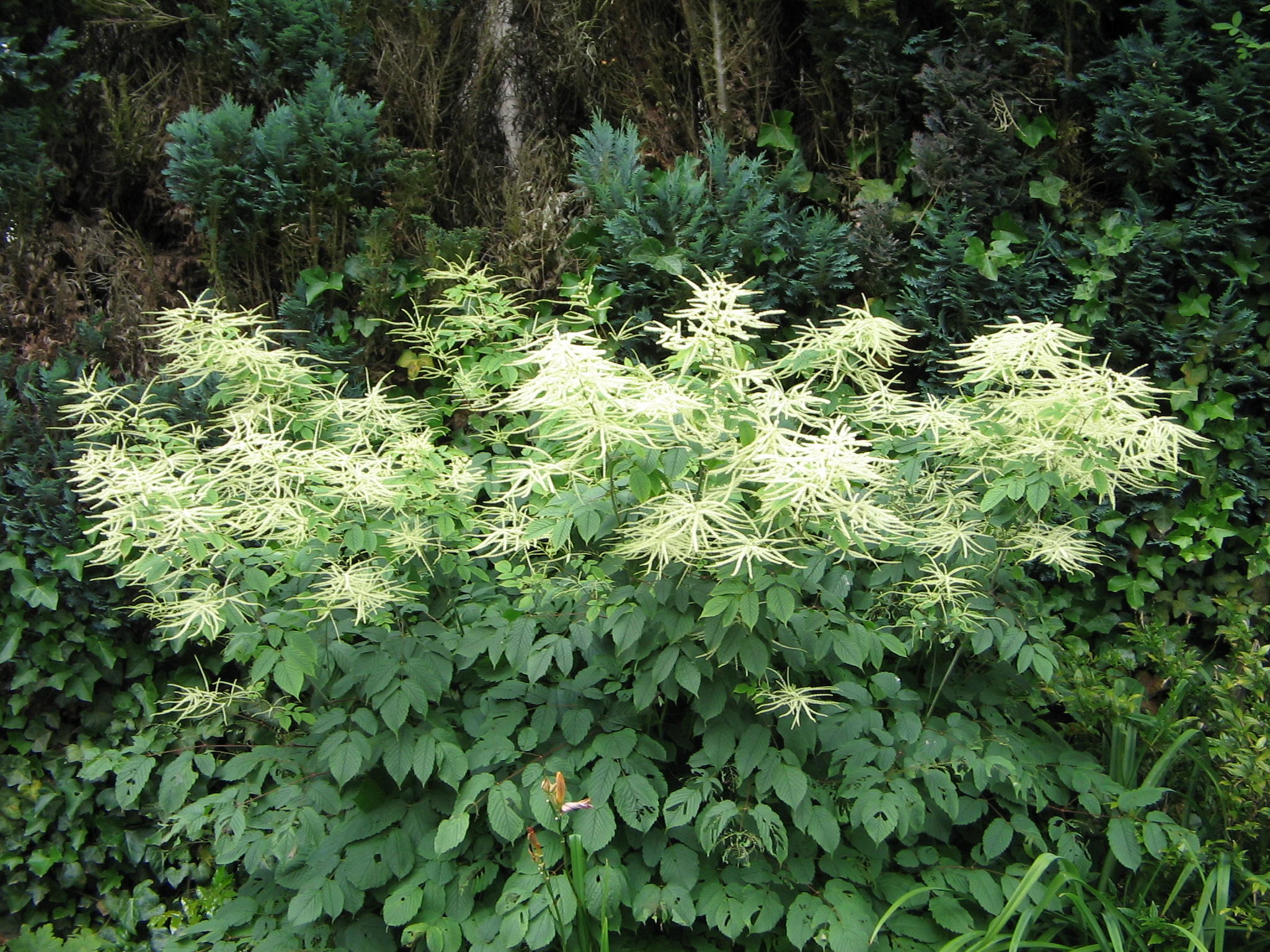Aruncus
Forest Geißbart ( Aruncus dioicus )
The Geißbärte ( Aruncus ) are a genus of the subfamily Spiraeoideae within the rose family ( Rosaceae ).
Description
The Aruncus species grow as perennial, sometimes slightly woody at the base of herbaceous plants which have a strong underground rhizome. For this grow upright, winged stems that can reach heights of growth between 40 cm and 2 m, depending on the type.
The large leaves are one to three times pinnate ( Aruncus gombalanus ), two to three times in three parts ( Aruncus dioicus ) or almost to the ground two to three times pinnatisect ( Aruncus aethusiflius ). Stipules absent.
Aruncus species are dioecious ( getrenntgeschlechtig, dioecious ). The large, terminal, paniculate inflorescences consist of narrow aged men part inflorescences. The small flowers are usually unisexual, rarely bisexual. The most five (rarely four or six) sepals are also still present in the fruits. The five white to off- white petals are fused only at their base. The male flowers contain 15 to 30 stamens; they are longer than the petals. The female flowers usually contain three or four (rarely up to eight ) carpels and staminodes short. The smooth follicles contain two seeds.
Species
The genus consists of three to six types:
- Aruncus aethusifolius Nakai: A Korean style, which is sometimes used as an ornamental plant.
- Forest Geißbart ( Aruncus dioicus (Walter ) Fernald ): A nordhemisphärisch widespread forest plant.
- Aruncus gombalanus ( Handel-Mazzetti ) Handel-Mazzetti: An East Asian species that grows on mountain meadows.
- Aruncus sylvester Kostel. ex Maximowicz: This Asian species is a subspecies of Aruncus dioicus for some authors.
Swell
- Description in the Flora of China - Aruncus. (English )










